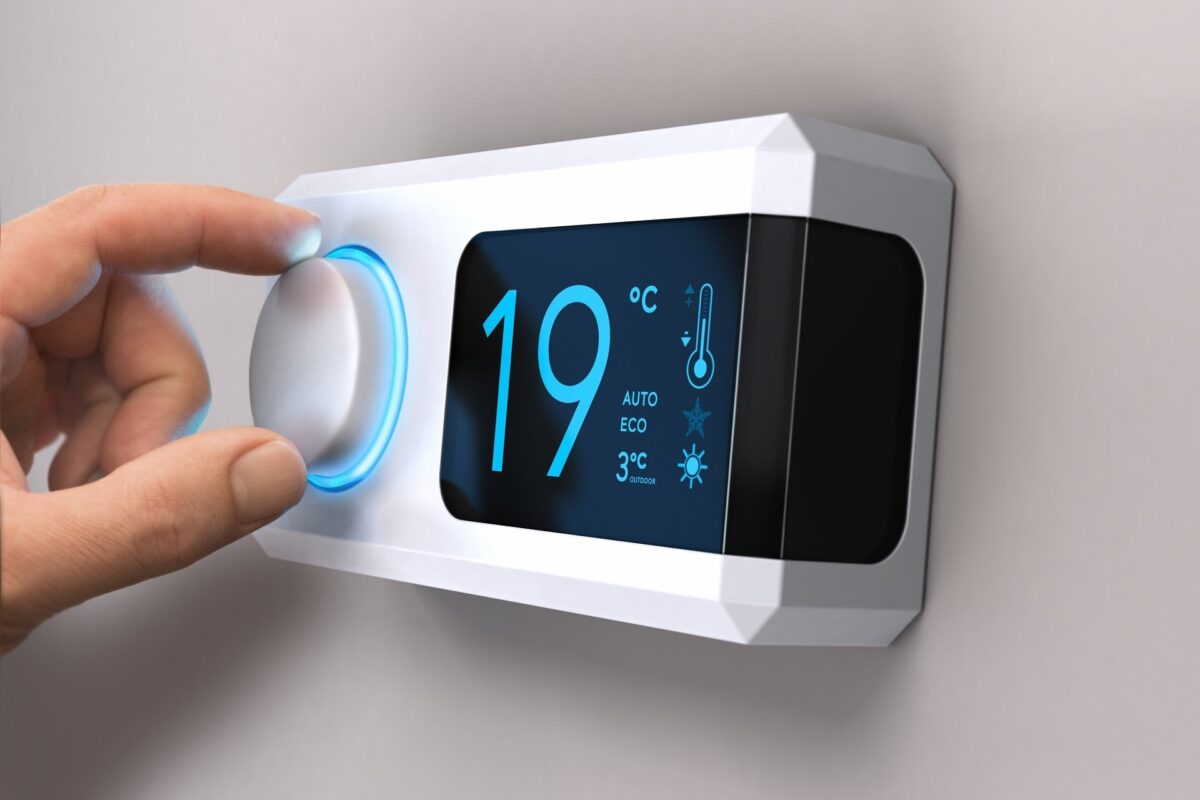I Want a Smart Thermostat but Don’t Have a C Wire – What Are My Options?

Smart Thermostat Without C Wire
Getting a smart thermostat is the most sensible and wise option if you are desirous of lowering your heating and cooling-related utility bills. These de vices learn your preferences in indoor temperature settings and also your routine. Accordingly, they churn out an energy-efficient schedule that matches your expectations. Making the deal far better is the fact, with a smart thermostat, you can regulate the temperature from just about anywhere as long as you have a device connected to the internet.
Usually, installing a smart thermostat is not too complicated. An HVAC technician can efficiently perform it. Nevertheless, one common problem that arises more often in older houses is that of improper wiring. To be more precise, some homes do not have a thermostat C wire in their HVAC wiring. Does that mean if your home does not have a C wire, you cant install a smart thermostat? Today, we address this issue and enlighten you about the available options.
Thermostat C Wire
“C” in the C-wire stands for “common.” It is an extra wire that serves to provide a return path for 24 Volts of continuous power to the smart thermostat. In layman’s terms, the thermostat C wire closes the circuit to provide the thermostat with constant 24 Volt power.
Let’s talk about color-coding. When it comes to wires, a combination of colors and shorthand is used to indicate the purpose the wires serve. For example:
1. G-wire – Signal to turn on the fan, usually green in color.
2. R-wire – 24 V AC power, usually red in color.
3. Y-wire – Signal to turn on cooling, usually yellow in color.
4. W-wire – Signal to turn on the heating, usually white in color.
5. C-wire – Common wire for continuous power, usually black or blue in color.
Despite the colors being more or less a standard practice, it is still not wise to depend on them blindly. It is possible during repairs or maintenance, the availability of the correct color wire was limited, and hence, substituted with a wire of another color.
What To Do If You Don’t Have A C-Wire
If your home is old and does not have a C-wire, your only option is to either forget about installing a smart thermostat or get your home rewired. Is that what you think? Well, there’s good news in store for you.
If your home has no C-wire, it does not mean you can’t use a smart thermostat. So rest assured, you can still install your new smart thermostat and reap its sweet fruits. All you have to do is depend on the experience, expertise, and creativity of the HVAC technician.
Your Options When There’s No C-Wire
#1 Option – Do Nothing At All – The good news is that all smart thermostats don’t require a C-wire. Some can work equally well without them. However, the claim is slightly misleading because, in these cases, the thermostat draws the necessary power for its screen and Wi-Fi capabilities by stealing power. Some people may barely notice the power stealing, while others may complain that their Wi-Fi does not always stay connected and the furnace is continuously cycling.
#2 Option – Search For A Hidden C-Wire – The old thermostats did not need a C-wire as batteries powered them. In those cases, the unused common wire of the HVAC wiring remained tucked away in the wall. Therefore, your next obvious course of action is to verify if that’s what you are dealing with. First, turn off the power to your HVAC system and take off the thermostat’s front plate to see the existing wire connections. Now, unscrew the backplate of the thermostat and gently pull it forward along with the wires. Behind the plate, you will see the HVAC wiring that connects to the thermostat. It will be in the form of a sheath with different colored wires coming out. If you see a wire wrapped or taped around the sheath, it is most probably the C-wire. Nonetheless, let the HVAC technician be the judge of that.
#3 Option – Use The G-Wire as C-Wire – Sounds simple? But not really so because it has a drawback. The G-wire is used to turn on the fan. If the G-wire is converted to C-wire, you will no longer be able to use the fan independently when heating or cooling is not running. So, you shall have to compromise on that front. If you wish to continue, disconnect the G-wire from the G-terminal and connect it to the C-terminal in the furnace and the thermostat. You will need a jumper cable to connect the empty G-terminal to Y-terminal on the circuit board.
There is one more problem with this option. For some HVAC systems, this option is not viable, like:
1. An HVAC systemthat uses electric heat.
2. An HVAC system that is two-wire heat only.
#4 Option – Buy An Adapter – Some smart thermostats come with smart home kits. If yours hasn’t, don’t fret, for you can also buy one from a home improvement store. The kit comes with a diode that divides the power from an existing wire into two separate wires. Although this solution sounds easy to perform, we still advise you to let a trained technician handle the task. It is because you can get confused and connect the wires in the wrong positions. A technician is trained for these tasks and will never make mistakes.
#5 Option – Install New HVAC Wiring – An obvious solution in which you will not have to make do with creative solutions is installing brand new HVAC wiring that has the necessary C-wire. This way, you need not compromise on when the fan will work or not, and there is no need to buy any smart home kits. It is a simple and much more straightforward solution, though it may cost a bit more.
Closing Thoughts
It is necessary to hook up your smart thermostat correctly to deliver on all promises. This task is simple, but because your complete heating and cooling system is dependent on it, we highly recommend that the thermostat installation best be left to professionals. With their help and expertise, things will never go wrong.












